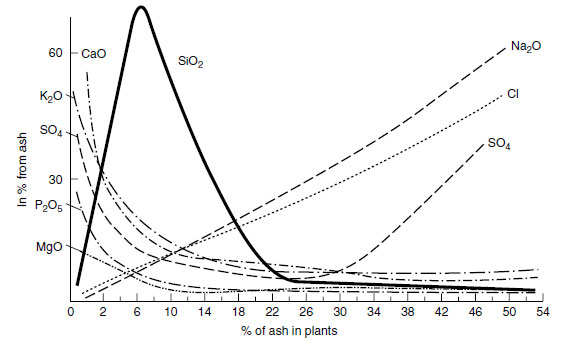Historical Perspectives
In 1819, Sir Humphrey Davy wrote: The siliceous epidermis of plants serves as support, protects the bark from the action of insects, and seems to perform a part in the economy of these feeble vegetable tribes (Grasses and Equisetables) similar to that performed in the animal kingdom by the shell of crustaceous insects (1)In the nineteenth and twentieth centuries, many naturalists measured the elemental composition of plants. Their data demonstrated that plants usually contain silicon in amounts exceeding those of other elements (2) (Figure 19.1). In 1840, Justius von Leibig suggested using sodium silicate as a silicon fertilizer and conducted the first greenhouse experiments on this subject with sugar beets (3). Starting in 1856, and being continued at present, a field experiment at the Rothamsted Station (England) has demonstrated a marked effect of sodium silicate on grass productivity (4).
The first patents on using silicon slag as a fertilizer were obtained in 1881 by Zippicotte and Zippicotte (5). The first soil test for plant-available silicon was conducted in the Hawaiian Islands by Professor Maxwell in 1898 (6).
Japanese agricultural scientists appear to have been the most advanced regarding the practical use of silicon fertilizers, having developed a complete technology for using silicon fertilizers for rice in the 1950s and 1960s. Other investigations of the effect of silicon on plants were conducted in France, Germany, Russia, the United States, and in other countries.
 |
| FIGURE 19.1 Silicon in ash of cultivated plants. (From V.A. Kovda, Pochvovedenie 1:6-38, 1956.) |




